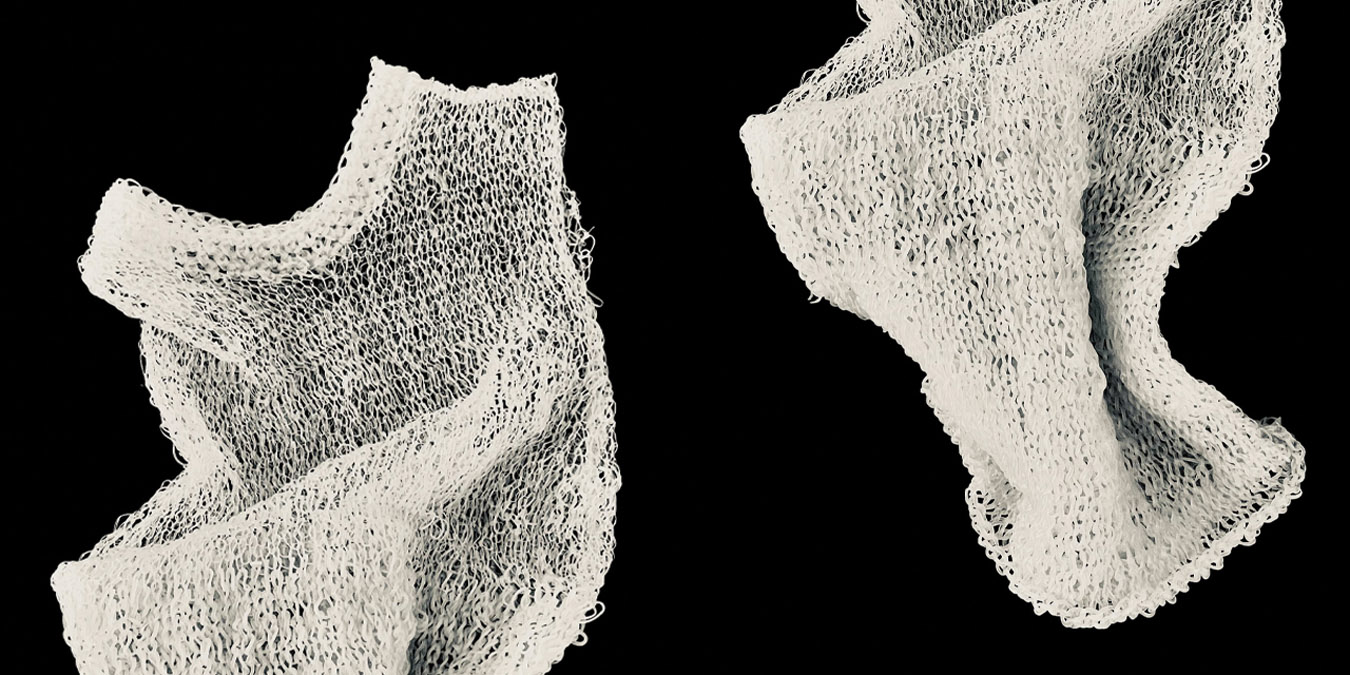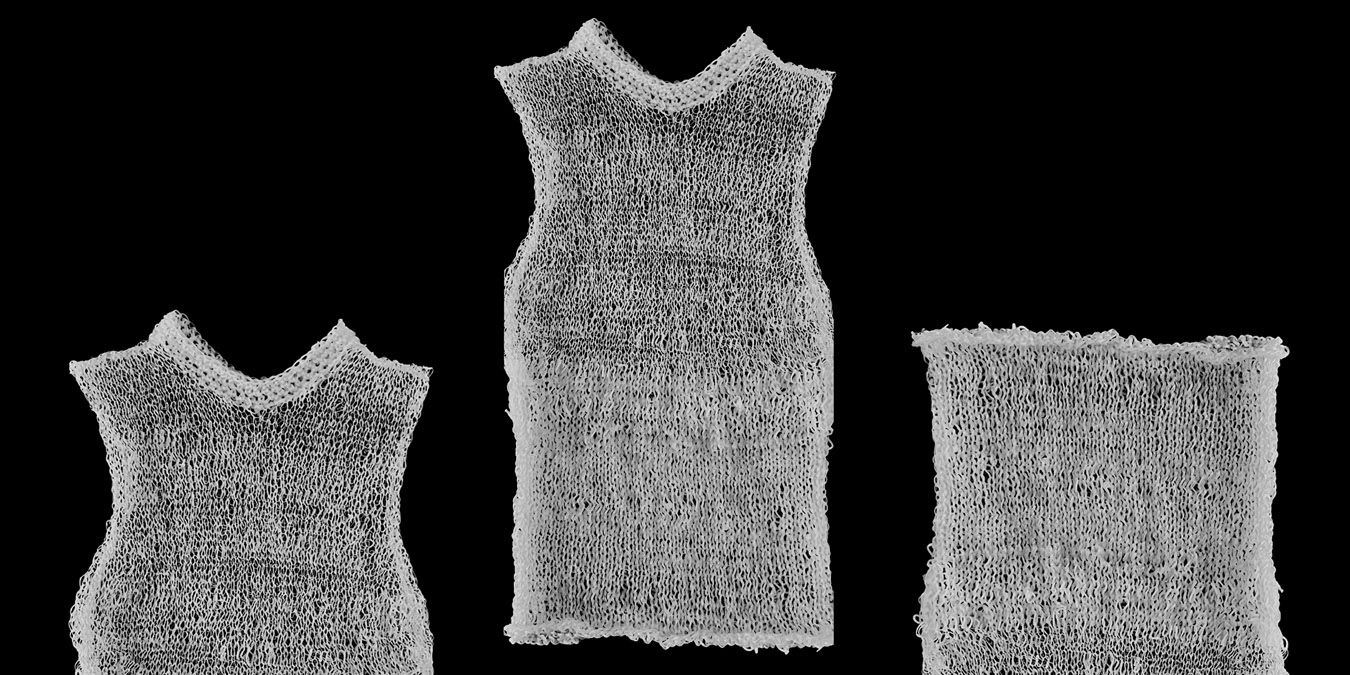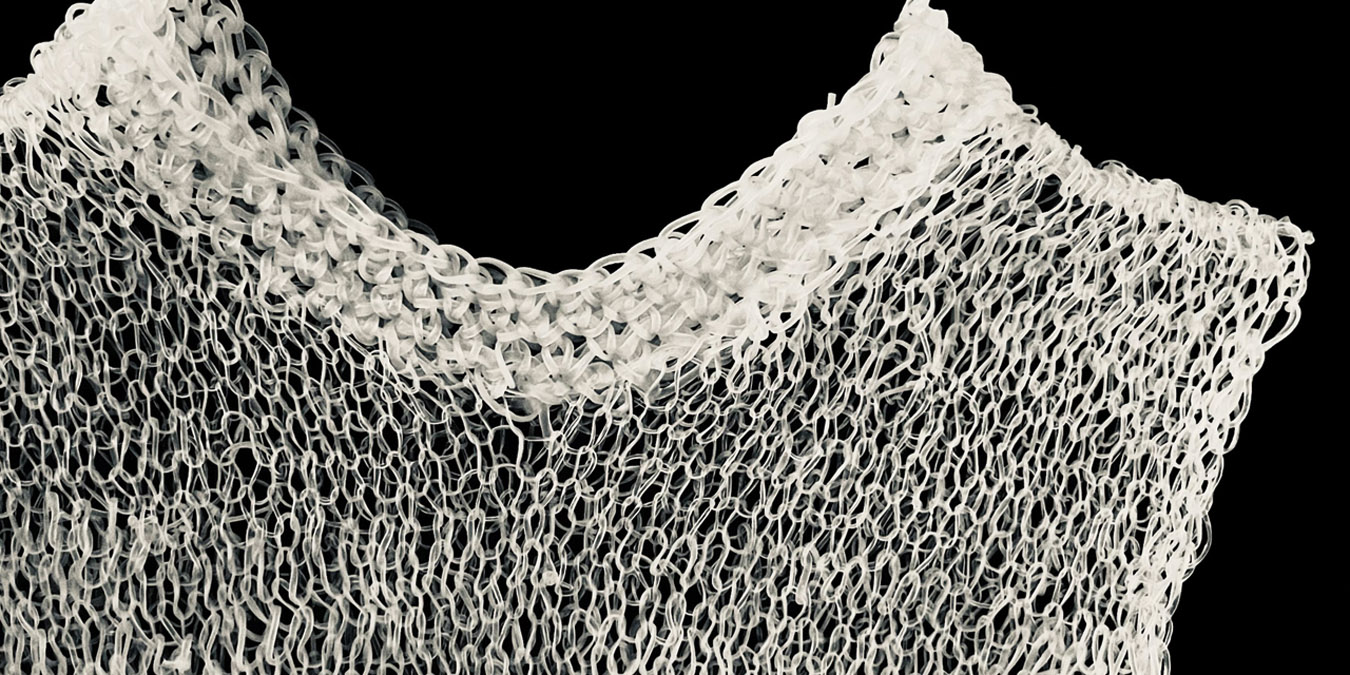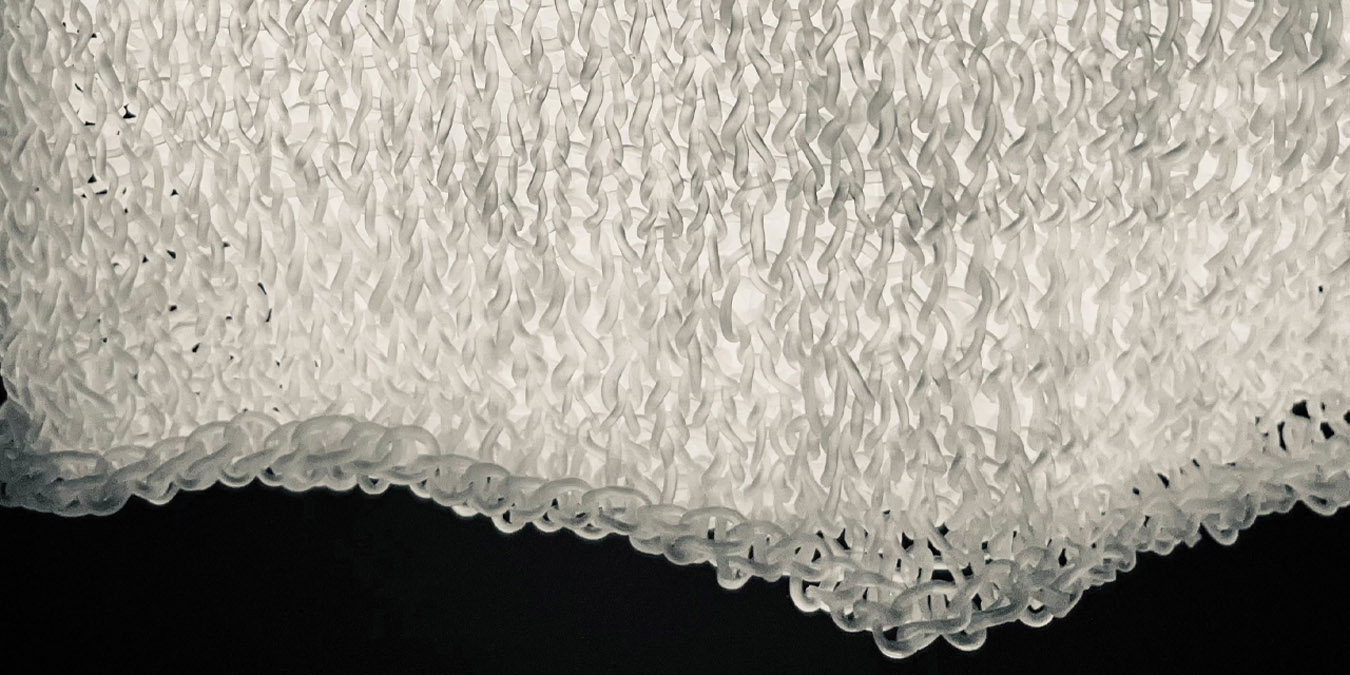The project followed a meticulous design process, emphasising sustainability and material innovation. The primary aim was to create a biodegradable product that fosters circularity. The design process began with extensive research and experimentation to develop custom biomaterial recipes, ensuring the material properties were suitable for knitted apparel. Multiple rounds of testing and adjustment were conducted to create a yarn strong enough for knitting. The yarn was made from compost-friendly ingredients and hand-extruded via syringe into a solution, where it cured instantly before being dried and knitted into workable water resistant fabric. A step-by-step process was established for consistent yarn production, and the extrusion method was altered to achieve different yarn thicknesses.
Inspiration was drawn from organic and aesthetically pleasing knit patterns, guiding the design development phase. Ideation sessions explored various shapes and patterns, eventually narrowing down to a design that balanced simplicity and visual interest while accommodating the delicate nature of the yarn. The design process also considered the material’s functions, curating a top that would highlight the unique properties of the biodegradable yarn.
The final design was implemented by creating mockups and knitting samples to refine the shape and structure of the top. This process ensured the final product met the project’s sustainability goals and aesthetic standards. The project successfully met the design brief by integrating biomaterials into a sustainable, biodegradable product, highlighting circular consumption models, and challenging conventional product typologies. The final artefact showcased innovative design practices and contributed to the broader discourse on sustainable material use, thus exceeding the design brief’s expectations. Through a detailed and iterative process, the project demonstrated the potential for biomaterials in fashion, promoting a shift towards circular consumption models and sustainable design practices.





